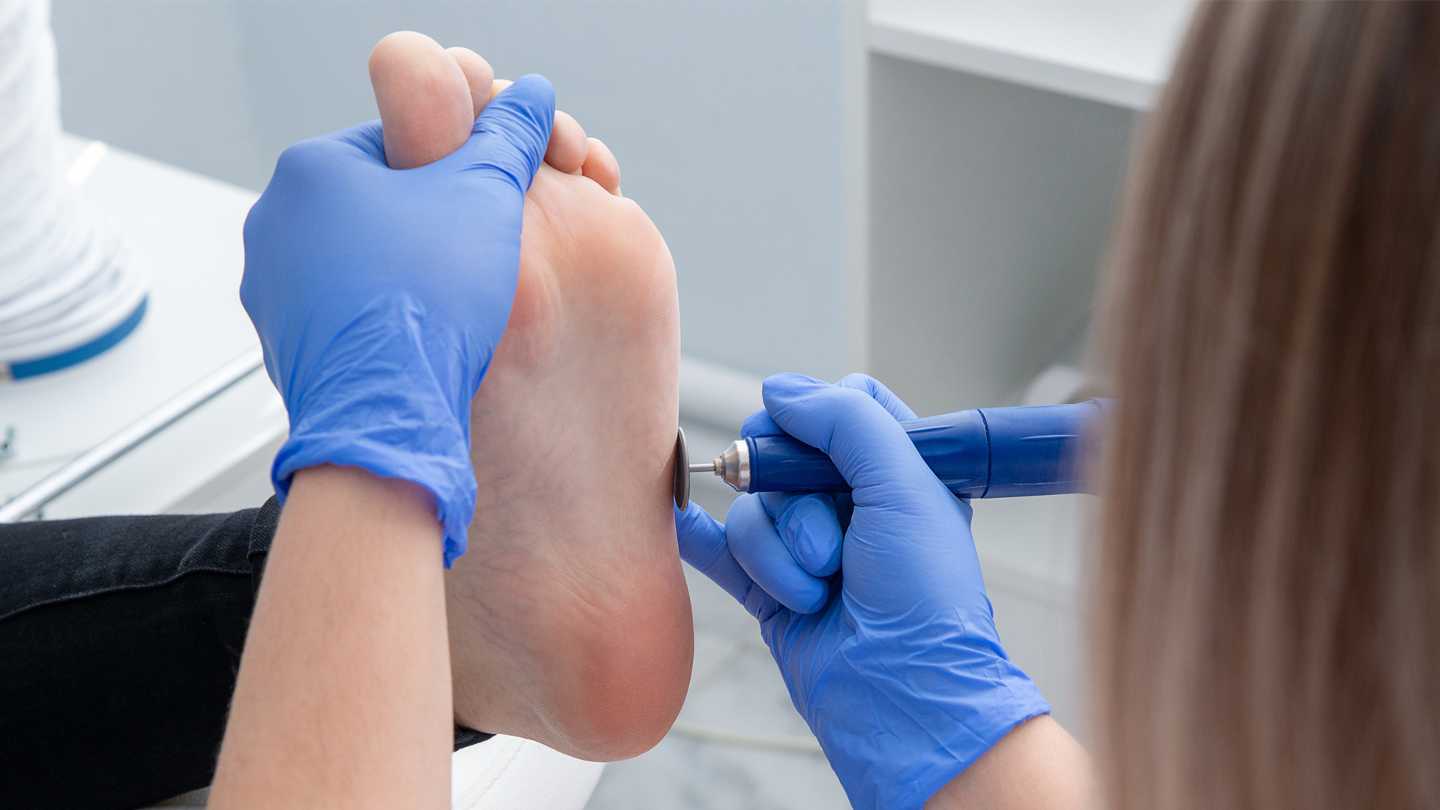How to start your own pedicure business

- Henk Herkink
- The basis
- Edited 11 March 2025
- 5 min
- Starting
When starting your own pedicure practice, there are all kinds of things you need to arrange. Think about finding a practice space and getting to grips with laws, regulations, and tax matters. Here you will find everything you need to think about.
What do you need to do and arrange when starting a business?
Find out with the 'Personal to-do list' on Business.gov.nl. Answer the questions and see the steps that are important in your situation.
- Exploring the market and finding customers
- Diplomas
- Registration with KVK
- Rates
- Reimbursement by health insurers
- Location
- Taxes
- Rules and regulations
- Sector organisations
- General information for starting entrepreneurs
Exploring the market and finding customers
The number of pedicure practices has been growing for years. On 1 January 2025, there were 14,603 pedicurists registered with KVK. So think about how to ensure that customers choose you. Use the KVK to see how much competition there is in your area.
Number of pedicure practices in the Netherlands (2021-2025)
| Year | Number of pedicures as of 01-01 |
|---|---|
| 2021 | 13,470 |
| 2022 | 13,701 |
| 2023 | 14,000 |
| 2024 | 14,415 |
| 2025 | 14,603 |
Source: KVK Business Register
Diplomas
Pedicure is not a protected profession. That means there are no compulsory diplomas and anyone who gives foot treatments can call themselves a pedicurist.
Nevertheless, taking a pedicure or medical pedicure course is smart. It shows your customers that you have the knowledge and skills to take good care of their feet. There are MBO courses and industry courses. In both courses you will learn the pedicure profession, but in an MBO course you will also learn other subjects, such as Dutch and mathematics. If you have a diploma in Medical Pedicure, you can register in the Quality Register for Pedicures (KwaliteitsRegister voor , KRP, in Dutch).
Registration with the Chamber of Commerce KVK
When you start your own pedicure practice, you become an entrepreneur. You then have to register your business in the KVK Business Register. Make an appointment online. Consider in advance which legal structure you will choose. This is the legal structure of your business. You also need to provide a business description. Here you describe what activities you perform with your business.
Rates
Pedicurists charge a fixed price per treatment. When determining that price, also called your fee, take into account:
- fixed costs, such as your rent and insurance.
- variable costs, such as the devices and products you use in a treatment.
- profit: how much money do you want to have left over per treatment?
- taxes: how much money should you put aside for income tax and turnover tax?
Have you done extra training and are you a specialist in a certain field? Then you can charge more money for the treatments you offer. Check whether you can earn enough income from your business.
Reimbursements by health insurers
Health (in Dutch) usually only reimburse preventive foot care. This is care to prevent problems, such as for people with diabetes or other diseases. You can only do these treatments if you are a medical pedicurist. Check every year which foot care treatments insurers do and do not reimburse. That way, you can inform your clients correctly.Treatments to beautify the feet are called cosmetic. Clients have to pay for these treatments themselves.
As a starting medical pedicurist you must register as a new healthcare provider. This is required under the Care Providers (Accreditation) Act (WTZI). Log in to the Healthcare Provider (in Dutch) and complete the questionnaire. After submitting the questionnaire, your registration is complete.
Also apply for an ABG (in Dutch). You need this code to declare the care you provide to health insurers.
Business Location
You can offer pedicure treatments at several differnt locations.
Operating a pedicure business from your home
Starting from home is often easy. If you have a spare room, you can set it up as a practice. Check in advance with your whether you need to report to them that you are starting a business from home. Find out what you need to pay attention to when you start renovating and whether you are allowed to place a sign or advertising outside, for example.
Also check whether your mortgage agreement or rental contract says anything about starting a business from or near your home. Or check with your mortgage lender or landlord.
You will also need extra insurance. Your home contents and buildings insurance are for private property and the house itself. For damage to things for your business and your workspace, you need business insurance.
KVK Insurance Check
While some insurance policies are compulsory, others are simply practical and convenient. Which ones do you need? The KVK Insurance Check helps you choose your insurance products.
Mobile pedicurist
If you visit clients for pedicure treatment, you work on an mobile basis. You visit your clients at their location. The advantage is that you can get started easily and quickly. Just make sure you have business liability . You will then not have to pay for damage you cause at a client's home.
You can also combine mobile work with your home practice. If you work at clients' homes, include your travel expenses in your rates.
Renting or buying a premises
Do you want to rent or buy business premises? Then think carefully about your requirements and wishes: how much space you need in the treatment room, for example. And whether there is enough room for waiting customers. Check the municipality's zoning plan to see if you can open a pedicure practice in the building you have your eye on.
Do you expect a lot of elderly clients? Then renting a space in a care home or nursing home might be possible.
Taxes
If the Tax Administration considers you an entrepreneur for , you will have to submit quarterly VAT returns. You report how much VAT you charged your customers and deduct the VAT you paid to your suppliers. The VAT rate for a pedicure is 21 per cent. Are you a medical pedicurist and do you treat high-risk feet? Then there is a VAT exemption for those treatments. In addition to VAT returns, you file an income tax return once a year.
Laws and regulations
The main laws and regulations you need to take into account as a pedicurist are:
Medical Treatment Agreement Act (WGBO)
As a pedicurist, you sometimes work with your clients' medical data. This data is protected by the Dutch Medical Treatment Contracts Act (Wet op de Geneeskundige Behandelingsovereenkomst, WGBO, in Dutch). This law states, for example, how long you must keep data and which privacy rules you must comply with.
Quality, Complaints and Disputes Act (Wkkgz)
Find out if you have to comply with the requirements of the Care Sector Quality, Complaints and Disputes . This law protects clients, for example if you make a mistake in treating a diabetic patient.
Music in your practice
Do you play music in your practice, background music for example? Then you need a licence (permission) for music . You can find the costs and conditions at from BumaStemra and Sena (category: Care).
Sector organisations
There are various sector organisations for pedicurists. These organisations represent the interests of their members:
- ProVoet (in Dutch) focuses on and (medical) pedicures with a recognised diploma.
- Stipezo is there for pedicures at MBO level in the care sector.
- NMMV is the professional association for medical pedicures with an mbo-4 diploma.
You can often take out professional liability insurance through a sector organisation. Did you accidentally injure a client during treatment? If you do not have liability insurance, you will have to pay the costs yourself.
You can also avoid problems with general terms and conditions. These set out the most important rules that apply to you and your clients. Sector organisations have general terms and conditions that members can use.
General starter information
In addition to the above topics, as a starter you will also face:
How to start a business in the Netherlands - a
Do you have questions about how to get started as a pedicurist? An adviser from the KVK Advice team will be happy to help you: 088 585 22 22.


